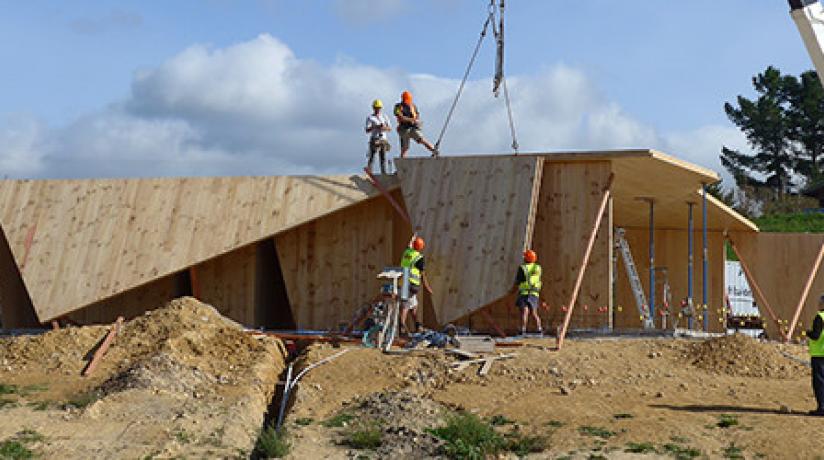By Julie-Anne Sheppard
Head of Strategic Projects and Business Development
The construction industry has been historically slow to adapt to change. Industry acceptance of innovation accelerates where there is significant return on investment and persuasive change factors include time, quality and cost efficiencies.
The notion of industry innovation and the challenges of successful market penetration intrigues me – no more so than when it comes to cross-laminated timber (CLT).
With innovative CLT technologies, cost and time savings can be enhanced by standardising the CLT panel manufacturing process. Standardisation decreases complexity, resulting in fewer computer numerical control (CNC) tooling changes. This has the domino effect of lessening the need for manual handling and reducing machine downtime. There is a risk, however, that standardisation could result in repetitive, overly-simple designs perceived as ‘bland’ by designers and consumers. Intuitively, standardisation seems counterproductive to the very disruptive and creative nature of innovation.
Can CLT successfully negotiate this paradox?
If we think about innovation as ‘change that adds value’, then CLT has tremendous promise. One only has to look at the rapid change to construction codes around massive timber construction globally to acknowledge there is great hope offered by this technology.
Technologies such as CLT change the traditional, fragmented process of building. In a CLT build, clients, suppliers, builders, architects and engineers collaborate from the outset. There is joint understanding upfront that enables seamless design, production and installation of the build. Depending on context and budget, cost and time savings come from utilising standardised modules and panels in creative combinations. With concrete and steel, further inventive opportunities arise. Engineered products such as CLT require precision in manufacture and installation, with the effect of up-skilling workers in quality capability processes.
CLT panels can be pre-manufactured, flat-packed and easily transported, to be installed logically and swiftly on site. This is particularly useful during projects like school renovations or constructions that have constrained timetables and site access. CLT provides an innovative solution to an intricate dilemma.
Designed as a structural product first and foremost, CLT can also ‘look and feel good’. CLT is uniquely sustainable and environmental by nature. Interestingly, use of CLT structurally and as exposed natural timber has proven effective in increasing the well-being of residential dwellers. Other research has shown that CLT technologies improve the overall thermal properties of a building and, subsequently, office worker productivity. Return on investment then, comes not just in cost and time savings for the build, but also for the longer- term use of a structure.
There is still work to be done to pave the way for industry change and acceptance of innovations like CLT. Education is key. Consumers need to understand the overall value and elegance of products such as CLT. Enlightening financial institutions and insurers of the new build processes created by new building systems, to improve the timing of lending and funding payments, is part of the solution. Also important is pressing for leadership from legislators to change regulatory roadblocks.
Technologies such as CLT that are innovative but capable of being standardised will do much towards delivering affordable and sustainable accommodation into the future as well as up-skilling the industry.






